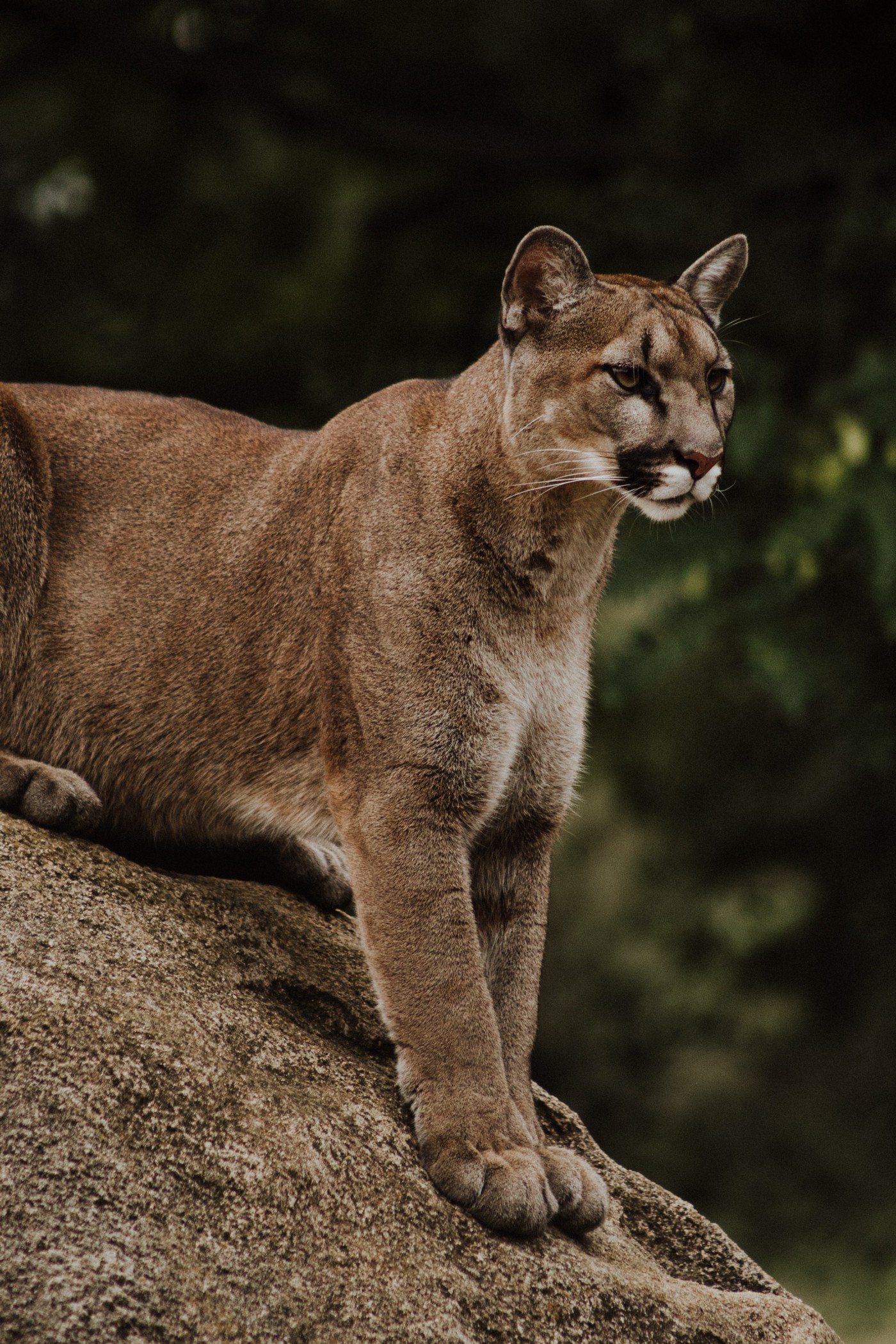Let Wilderness Thrive
By Jeremy Fox, Huxley Class of 2002
Photo by Robert Thiemann on Unsplash
I saw my first mountain lion in April 2018 while rafting on the Owyhee River in southeast Oregon. Our group was rigging boats to launch from camp, and a passing boater pointed up to the sagebrush-covered slopes and yelled back to us, “Mountain lion!” We spotted the cat and quickly finished rigging. Then we pushed off the rocky shore onto the quiet river, eyes trained on the hillside before us.
The mountain lion moved methodically up the slope with no sense of urgency. It looked eight feet long from nose to tail, and yet it managed to conceal itself occasionally behind the scrubby vegetation. We floated and watched for ten minutes as the cat ascended the slope, paused at the rim of the canyon, then disappeared from our view onto the plateau.
I saw my second mountain lion during a solo canoe trip on the John Day River in central Oregon. It was April 2019, and steady rainstorms had been drenching the region, carpets of low, gray clouds as far as I could see. I had set up camp on a thin stretch of grassy beach between the steadily rising river and a barbed wire fence that surrounded a large pasture.
View of the John Day River upriver from the mountain lion cave. Photo by Jeremy Fox
It was too cold to sit at the water’s edge and too early for bed, so I explored the rocky slope above my camp. I scrambled up the hillside toward what looked like a cave. As I approached the cave, eyes on the loose rock scree at my feet, I heard a commotion above me. As I looked up, a flash of dark tan animal was bounding from the cave entrance not thirty feet from me.
Photo by Priscilla Du Preez on Unsplash
I froze. My mind flashed: what do you do when encountering a cougar — stay still, make noise? I had learned, had been trained that you’re supposed to make yourself big, make a lot of noise. But in that moment, as the mountain lion made long, powerful strides across the slope and away from me, the pure wildness of this animal — and the alarm we caused each other — paralyzed me. I fumbled with my phone, dropped the phone, managed to pick it up and hastily push “record” to capture a flash of movement on the screen (when I show the video now to friends, they laugh; apparently only I can see the cougar in it).
Once my heart quit racing, and after I reasoned the mountain lion wouldn’t circle back to ambush me, I followed the tracks to see if I could get some good pictures of a paw print and to see where the animal could’ve gone. I found a spot where the cat’s paws disturbed some rocks and soil — a paw scratch, really — took one photo and…my phone died.
There were many well-defined prints after that scratch. As I followed the cat’s travel path up through the narrow gap in the rocks, I decided that this sighting wasn’t meant to be captured in photos. The mountain lion was nowhere to be seen. It was likely a half mile away by now, perhaps up on some higher vantage point, watching me plod along without feline grace through the rock and grass.
The cave where both human and lion startled each other. Photo by Jeremy Fox
What amazes me most about these mountain lion experiences was the sense of raw wildness I felt watching these animals. The landscapes they traveled became wilder because of the animal. This deep wildness — you don’t find the same depth in parks and popular recreation areas. To be sure, those places can be wild, and wild animals live there. But to see a creature like a mountain lion, or wolf, or wolverine — these animals require vast, undeveloped landscapes.
We need such landscapes as part of the fabric of our country, whether or not many people will go there in person. We need these places, if anything, just to know there remains an untamed link to times before we arrived. Unfortunately, we humans are not good at restraint when it comes to determining what not to develop, where to place limits, where to discourage our permanent presence. But there are people committed to setting limits and exercising restraint; or, in an inverted way of thinking, there are people committed to promoting the wildness and allowing for solitude.
There is value in knowing there still exist places and creatures that are beyond our control, places and creatures that can take our breath away with their untamed rawness, the fear they instill in us, and the awe they leave us in.
The cave where I startled the mountain lion is located on the edge of the Spring Basin Wilderness, an area set aside in 2009 as part of the Omnibus Public Lands Bill. This Wilderness Area came about only through the tenacity and compromises of local landowners, conservation groups, governments, Native American tribes and citizen advocates. The result is a 6,400-acre landscape forever to remain wild. That was a success.
There was some hope that at the end of President Obama’s second term he might designate a large part of the Owyhee River region a National Monument, but it did not happen. Federal Wilderness designation without input from local communities would likely deepen the divide between the local land users and oft-distant environmental advocates.
But in November 2019, new legislation was introduced to create over one million acres of wilderness-designated lands in the Owyhee area, and this legislation was crafted with input from local communities, Native American tribes and conservationists. The fate of this legislation remains to be seen — can lawmakers recognize its collaborative value?
The Owyhee area is a mishmash of geologic colors and eras. Photo by Jeremy Fox
When writing about wildness and wilderness, it is easy to slip from one to another, as I have done here. They are two different things, however.
Wilderness is a place where wildness can exist, and it is also a designation to which humans have attached many other regulations and definitions. Wilderness can be studied for economic impact and opportunity.
Wildness is something beyond these measurements of value. But there is value in knowing there still exist places and creatures that are beyond our control, places and creatures that can take our breath away with their untamed rawness, the fear they instill in us, and the awe they leave us in.
About the Author
Jeremy Fox graduated from Huxley College in 2002 with a degree in Environmental Education. Since then he has engaged in many seasonal, outdoor employment paths, balanced with healthy doses of travel and personal recreation. He currently lives in Bend, Oregon.






